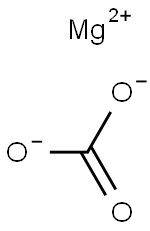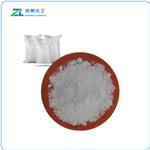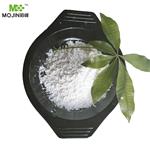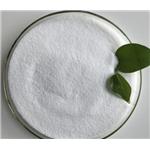Description
Magnesium carbonate (MgCO3, pKso=7.5-8.2), another important compound of magnesium, occurs naturally as magnesite,but the magnesium carbonate used in the United States is all synthetically manufactured. It's used in the pharmaceutical industry as an inert material: whenever you take a tablet, chances are, you're also taking magnesium carbonate. Its used as an inert binder to hold the actual particles of the drug together.It's also used in cosmetics, talcum powders, and the manufacture of soap because it can hold and carry a scent very effectively.
Magnesium carbonate is added to rubber and plastics as a flame retardant: it reduces the rate at which fire spreads and the amount of char and ash that is produced.
Chemical Properties
Magnesium carbonate is a white, yellowish, grayish-white or brown crystalline solid or crystalline powder. It occurs in nature as the mineral magnesite and is an important source of elemental magnesium. It can be produced artificially by the action of carbon dioxide on a variety of magnesium compounds.
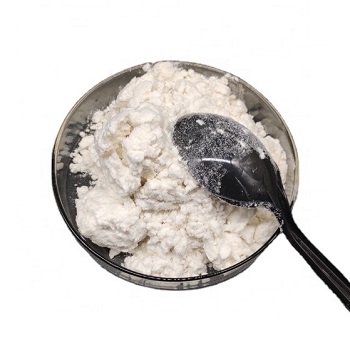
Magnesium carbonate is a flux. It can be used to make matte, but too much can cause pinholes. Cobalt will produce violet hues when combined with magnesium carbonate, and pink shades when combined with zinc.
Magnesium carbonates can be used as magnesium source for the manufacture of catalyst compounds.
Magnesium Compounds
Compound Mineral Formula CAS No.
anhydrous salt magnesite MgCO3 [13717-00-5]
dihydrate barringtonite MgCO3•2H2O [5145-48-2]
trihydrate nesquehonite MgCO3•3H2O [14457-83-1]
pentahydrate lansfordite MgCO3•5H2O [61042-72-6]
basic carbonate artinite MgCO3•Mg(OH)2•3H2O [12143-96-3]
basic carbonate hydromagnestite 4MgCO3•Mg(OH)2•4H2O [12072-90-1]
basic carbonate dypingite 4MgCO3•Mg(OH)2•5H2O [12544-02-4]
basic carbonate --- 4MgCO3•Mg(OH)2•8H2O [75300-49-1]
Occurrence and Uses
Magnesium carbonate occurs in nature in several minerals as hydrated, basic and double salts, as shown above. The two principal minerals are magnesite, MgCO3 and dolomite, a double salt, CaCO3•MgCO3. Both minerals are used as source materials in the production of magnesium metal. Also, they are calcined to produce basic refractory bricks. Other applications of magnesium carbonate are in flooring, fireproofing and fire-extinguishing compositions; as a filler material and smoke suppressant in plastics; as a reinforcing agent in neoprene rubber; as a drying agent and for color retention in foods; in cos-metics; in dusting powder; and in toothpaste. The high purity magnesium carbonate is used as an antacid in medicine; and as an additive to table salt. Another important application of magnesium carbonate is as a starting material in producing a number of magnesium compounds.
Description
Magnesium carbonate is obtained mainly by mining
the natural mineral magnesite. The trihydrate salt,
MgCO
3·3H
2O, is prepared by mixing solutions of magnesium
and carbonate ions in the presence of carbon
dioxide.
Chemical Properties
Magnesium carbonate occurs as light, white-colored friable masses
or as a bulky, white-colored powder. It has a slightly earthy taste
and is odorless but, since it has a high absorptive ability, magnesium
carbonate can absorb odors.
The USP 32 describes magnesium carbonate as either a basic
hydrated magnesium carbonate or a normal hydrated magnesium
carbonate. However, the PhEur describes magnesium carbonate as
being a hydrated basic magnesium carbonate in two separate
monographs: heavy magnesium carbonate and light
magnesium carbonate. The molecular formulas for
heavy magnesium carbonate and light magnesium carbonate vary,
but heavy magnesium carbonate may generally be regarded as the
tetrahydrate [(MgCO
3)
3·Mg(OH)
2·4H
2O], while light magnesium
carbonate may be regarded as the trihydrate [(MgCO
3)
3·
Mg(OH)
2·3H
2O].
The molecular weights of the heavy and light forms of
magnesium carbonate are 383.32 and 365.30, respectively.
Physical properties
This material is available in a very light, fluffy grade which absorbs well. The before-mentioned qualities are why magnesium carbonate is often used to absorb perfume before incorporation into face powders.
Uses
Used in Pharmaceutical units as a Magnesium Salt, Heat Insulator and Refractor, Antacid. Also used in Cosmetics, inks, glass, drying agent, color retention agent and etc.
Uses
Chemical intermediate for magnesium
salts; component of pharmaceuticals, cosmetics,
dentifrices, free-running table salt; agent in
heat insulation and refractory applications
Uses
Some applications of magnesiumcarbonate are uses in
flooring, fireproofing and fire-extinguishing compositions;
as a filler material and smoke suppressant in plastics;
as a reinforcing agent in neoprene rubber; as a drying
agent and for color retention in foods; in cosmetics.
Magnesium carbonate is used as an antacid in medicine
and as an additive to table salt. Another important application
of magnesium carbonate is as a starting material in
producing a number of magnesium compounds.
Because of its water-insoluble, hygroscopic properties,
MgCO
3 was first added to salt in 1911 to make the
salt flow more freely. Magnesium carbonate, most often
referred to as “chalk”, is used as a drying agent for hands
in gymnastics, weight lifting and rock climbing. Magnesium
carbonate is also used in taxidermy for whitening
skulls. It can be mixed with hydrogen peroxide to create
a paste, which is then spread on the skull to give it awhite
finish. Basic magnesium carbonate is used as a clay in
face masks and it has mild astringent properties and
helps to smooth and soften skin. It is recommended for
use on normal to dry skins.
Definition
A whitecompound, MgCO
3, existing in anhydrousand hydrated forms. The anhydrousmaterial (trigonal; r.d.2.96) is found in the mineral magnesite.There is also a trihydrate,MgCO
3.3H
2O (rhombic; r.d. 1.85),which occurs naturally as nesquehonite,and a pentahydrate, MgCO
3.5H
2O (monoclinic; r.d. 1.73),which occurs as lansfordite. Magnesiumcarbonate also occurs in themixed salt dolomite (CaCO
3.MgCO
3)and as basic magnesium carbonatein the two minerals artinite(MgCO
3.Mg(OH)
2.3H
2O) and hydromagnesite(3MgCO
3.Mg(OH)
2.3H
2O).The anhydrous salt can be formed byheating magnesium oxide in astream of carbon dioxide:
MgO(s) + CO
2(g) → MgCO
3(s)
Above 350°C, the reverse reactionpredominates and the carbonate decomposes.Magnesium carbonate isused in making magnesium oxideand is a drying agent (e.g. in tablesalt). It is also used as a medicalantacid and laxative (the basic carbonateis used) and is a componentof certain inks and glasses.
Definition
lansfordite: A mineral form ofmagnesium carbonate pentahydrate,MgCO
3.5H
2O.
Definition
hydromagnesite: A mineral formof basic magnesium carbonate,3MgCO
3.Mg(OH)
2.3H
2O.
Definition
The term magnesite is
loosely used as a synonym for magnesia as are also
the terms caustic-calcined magnesite, dead-burned
magnesite, and synthetic magnesite.
Production Methods
Depending upon the manufacturing process used, the composition
of the magnesium carbonate obtained may vary from normal
hydrated magnesium carbonate to basic hydrated magnesium
carbonate.
Light magnesium carbonate may be manufactured by saturating
an aqueous suspension of dolomite, CaMg(CO
3)
2, with carbon
dioxide under pressure. On increase of the temperature, calcium
carbonate precipitates almost entirely. The filtered solution is then
heated to boiling; the magnesium bicarbonate in the solution loses precipitates.
Heavy magnesium carbonate may be manufactured by mixing a
hot concentrated solution of magnesium chloride or magnesium
sulfate with a solution of sodium carbonate. The heavy magnesium
carbonate may be either precipitated to produce a granular material
or spray-dried. Varying the temperature of the reaction solutions
produces heavy magnesium carbonate with differing physical
properties: e.g. material with a higher specific surface area is
produced at a lower reaction temperature. Low processing
temperature provided the largest surface area, which produced
optimum granules or spray-dried powder.If dilute magnesium
chloride or magnesium sulfate solutions are used for the reaction, a
less dense material is produced.
Magnesium carbonates in varying states of hydration are also
found as minerals in nature.
General Description
White, yellowish, grayish-white or brown crystalline solid or crystalline powder. Density: 3-3.1 g cm-3. An important ore for magnesium. Used in the manufacture of materials capable of withstanding very high temperatures. Sometimes used to produce carbon dioxide.
Reactivity Profile
Magnesium carbonate has generally low chemical reactivity. Non-flammable and non-combustible. Reacts with acids and acidic salts to generate gaseous carbon dioxide with effervescence (bubbling). The reaction may be rapid and exothermic with concentrated solutions of acids. The efferversence can create foaming. Incompatible with formaldehyde.
Hazard
A nuisance particulate.
Health Hazard
Magnesite is considered to be a
nuisance dust.
Flammability and Explosibility
Non flammable
Agricultural Uses
Nesquehonite is the natural form of magnesium
carbonate trihydrate (MgCO
3.3H
2O).
Agricultural Uses
Magnesium carbonate is a white compound occurring in
anhydrous and hydrated forms. It is used as a fertilizer
and also for making magnesium oxide.
The anhydrous material is found naturally in mineral
magnesite. There is also a trihydrate, MgC0
3·3H
2O
(rhombic) that occurs naturally as nesquehonite, and a
pentahydrate, MgCO
3.5H
2O (monoclinic) that occurs as
lansfordite.
Magnesium carbonate also occurs in a mixed salt
dolomite (CaCO
3·MgCO
3) and as basic magnesium
carbonate in two minerals, namely, artinite
[MgCO
3·Mg(OH)
2.3H
2O] and hydromagnesite
[3MgC0
3·Mg(OH)
2.3H
2O]. Heating magnesium oxide
in a stream of carbon dioxide leads to the formation of the
anhydrous salt.
Above 350°C, the reverse reaction predominates and
the carbonate decomposes to give back MgO.
Agricultural Uses
Hydromagnesite is a magnesium ore which occurs as a carbonate. Magnesium carbonate occurs in a mixed salt dolomite (CaCO
3.MgCO
3) and as basic magnesium carbonate in two minerals, namely, artinite (MgCO
3.Mg(OH)
2.3H
2O) and hydromagnesite (3MgCO
3.Mg(OH)
2.3H
2O).
Pharmaceutical Applications
As an excipient, magnesium carbonate is mainly used as a directly
compressible tablet diluent in concentrations up to 45% w/w.
Heavy magnesium carbonate produces tablets with high crushing
strength, low friability, and good disintegration properties.
However, magnesium carbonate can have varying effects on
dissolution and stability.Magnesium
carbonate has been incorporated in microsphere formulations for
the purpose of stabilizing encapsulated proteins. It has also been
coencapsulated in poly(lactide-co-glycolide) microsphere formulations
to neutralize acidity and enhance the immunogenicity of a
contraceptive peptide vaccine. Magnesium carbonate is also used
to absorb liquids, such as flavors, in tableting processes.
Magnesium carbonate is additionally used as a food additive and
therapeutically as an antacid.
Safety
Magnesium carbonate is used as an excipient in oral solid-dosage
pharmaceutical formulations and is generally regarded as an
essentially nontoxic and nonirritant material. However, the use of
magnesium salts, such as magnesium carbonate, is contraindicated
in patients with renal impairment. In certain studies, magnesium
carbonate has been shown to be an effective phosphate binder in
short-term use for patients with chronic kidney disease, but the
effects of long-term use require further study.The probable oral
lethal dose in humans has been estimated at 0.5–5.0g/kg bodyweight.
On contact with gastric acid, magnesium carbonate reacts in the
stomach to form soluble magnesium chloride and carbon dioxide.
Magnesium carbonate should therefore not be used as an antacid by
those individuals whose stomachs cannot tolerate the evolution of
carbon dioxide. Some magnesium is absorbed but is usually
excreted in the urine. As with other magnesium salts, magnesium
carbonate has a laxative effect and may cause diarrhea.
Therapeutically, the usual dose of magnesium carbonate as an
antacid is 250–500mg, and 2.0–5.0g as a laxative.
storage
Magnesium carbonate is stable in dry air and on exposure to light.
The bulk material should be stored in a well-closed container in a
cool, dry place.
Incompatibilities
Incompatible with phenobarbital sodium,diazepam solution at
a pH≥5, some binary powder mixtures, lansoprazole,
and formaldehyde. Acids will dissolve magnesium carbonate,
with the liberation of carbon dioxide. Slight alkalinity is imparted to
water. Magnesium carbonate was also found to increase the
dissolution of acetazolamide formulations at a pH of 1.12; however,
dissolution was retarded at a pH of 7.4.
Toxics Screening Level
The initial threshold screening level (ITSL) for magnesium carbonate is 50 μg/m3 based on an 8 hour averaging time.
Regulatory Status
GRAS listed. Accepted as a food additive in Europe. Included in the
FDA Inactive Ingredients Database (oral capsules and tablets).
Included in nonparenteral medicines licensed in the UK.
